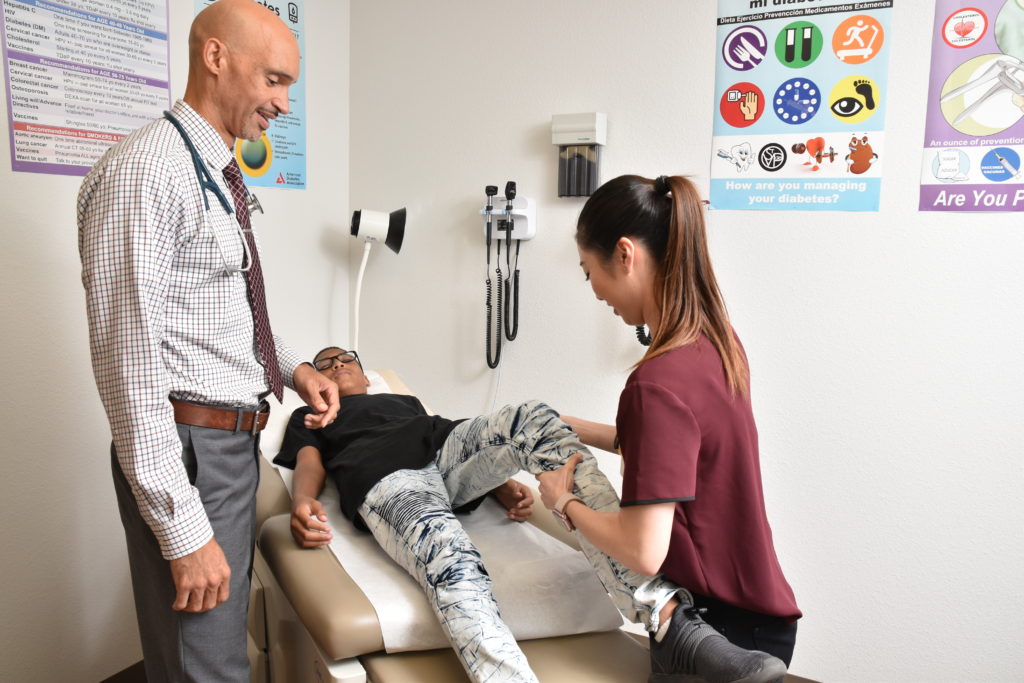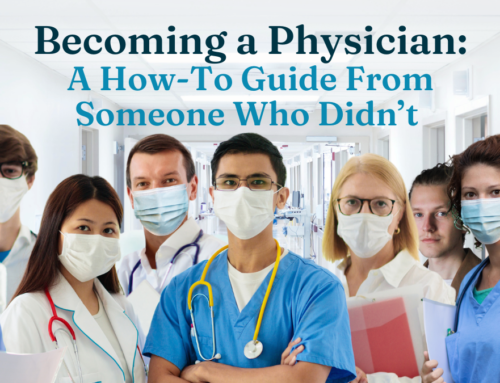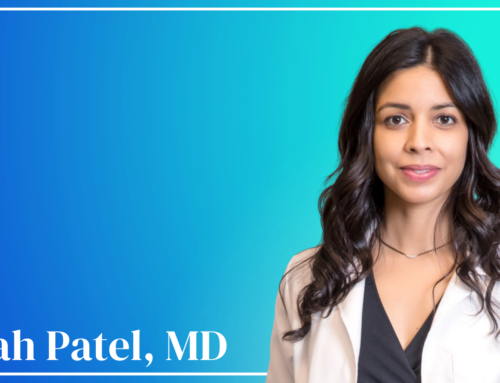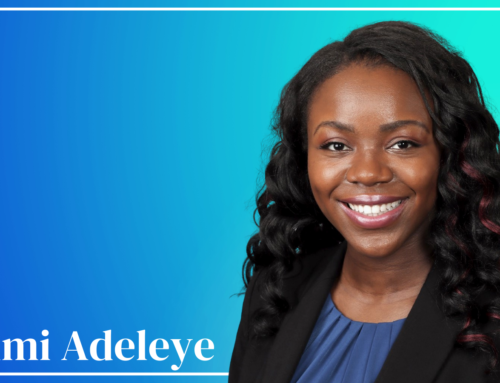Written by: Dr. Maurice Lee, Chief Medical Officer, St. Vincent de Paul
The end of summer brings many groans from teenagers knowing it is time to go back to school and time once again for the often-thought “pointless” visit to the doctor for their sports physical. If you talk to many teens and their parents they seem confused as to why they need a special visit to the doctor, where they usually pay a steeply discounted cash rate (instead of using insurance) for five minutes with a physician who reviews a few questions on a form and performs a brief physical exam ending in about 50 percent of the population dropping their pants, turning their heads and coughing.
Other students go through a sponsored sports physical day usually held in a school gymnasium converted into 20 or more exam stations. Again, the person at each station checks the boxes on a form and gives the student-athlete the green light to play sports for the next year. Because of these trends, rumors swirl about healthcare organizations taking advantage of a state requirement to try to recruit patients evidenced by the fact that the official AIA sports physical form has an urgent care sponsor on every page.
Yet I bet none of those people who had contact with the teenagers would be able to recall a name, what sport a student plays, what their interests or plans after high school is, or any of the health or social concerns that exist in their lives.
So why is any of it necessary?
 If done with a little more care and a lot more concern for the entire health of a student, we believe these required sports physicals—at least in the manner in which we offer them at St. Vincent de Paul’s Virginia G. Piper Medical & Dental Clinic—can have a greater impact on long-term wellbeing for youth.
If done with a little more care and a lot more concern for the entire health of a student, we believe these required sports physicals—at least in the manner in which we offer them at St. Vincent de Paul’s Virginia G. Piper Medical & Dental Clinic—can have a greater impact on long-term wellbeing for youth.
The majority of healthcare points of contact for teenagers are due to motor vehicle accidents where substances played a major role, depression, suicide attempts, unintended pregnancies, and sexually transmitted infections. Because of this, the American Academy of Family Physicians, American Academy of Pediatrics and four American sports medicine societies all agree that the sports physical should be performed by the adolescent’s primary care physician as a part of a routine health screening visit.
SVdP’s clinic offers sports physicals on the weekend at the beginning of the school year for the inner city Phoenix Union High School District. But the clinic does so with a twist, focusing on the HEADDSS exam instead of the “sports” physical. HEADSS stands for Home, Education, Activities, Delinquency, Drugs, Sexuality and Sad/Suicide. We stress to our volunteer providers the importance of going over each of these areas with the teens and helping counsel them on smart choices, avoiding risky behaviors and how to prepare for the next step in life—whether that’s college, trade school or work. Most of all, we let them know they can accomplish anything if they work hard at it.
This year we saw 429 student-athletes that will be future mechanics, doctors, veterans, lawyers, nurses and (if they’re so talented and lucky) professional athletes. Armed with six physicians, 24 Creighton University medical students, four University of Arizona medical students and 40 volunteer assistants, the SVdP clinic completed 429 HEADDSS exams. We found that many of the kids had multiple gunshot wounds, stab wounds, served as the primary caretaker for someone in their home, and worked two jobs. We also diagnosed one pregnancy.
This demonstrates to me two things. First, there is an opportunity being missed in the stereotypical required sports physical to truly better the overall health and well-being of adolescents. And second that these physicals at SVdP are sometimes the only chance a student in an underserved or uninsured family has to receive professional medical care.
It is unbelievable the amount of trauma, drama, and barriers experienced by the students SVdP saw that day in its clinic. For the physicians and medical students alike, it reminded us that we are likely the only doctor such a teenager will see during the entire year. And because we focused on the person in front of us and took the opportunity to offer a complete and thorough examination, there just may be a little less trauma and a better start to these students’ school year, sports seasons, and young lives.
 Chief Medical Officer: Dr. Maurice Lee, MD, MPH, FAAFP
Chief Medical Officer: Dr. Maurice Lee, MD, MPH, FAAFP
Dr. Maurice Lee is Chief Medical Officer of St. Vincent de Paul’s Virginia G. Piper Medical & Dental Clinic. He holds a bachelor’s degree in biology from Arizona State University and earned both a Doctorate of Medicine and a Masters of Public Health degree from the University of Arizona. He is board-certified in Family Medicine and has a passion for helping the underserved as well as teaching and practicing evidence-based and community medicine.
Background, training, philosophy
Maurice was born and raised in Tempe, Ariz., and graduated from Marcos de Niza High School. He went on to ASU, where he ran track and was selected to the PAC-10 Track and Field All-Academic First Team. Originally interested in marine biology, seasickness made Maurice reconsider his career path. He decided to pursue medicine with the goal of helping people that would not be able to get medical care due to financial, societal and/or cultural barriers. After graduating from ASU, Maurice joined the Peace Corps for two years as a health volunteer and helped a small town in Ecuador. That work forever shaped his perspective on helping those in need, showing Maurice the power of focusing on the possible instead of all the obstacles and reasons one might fail. Upon his return to the States, Maurice worked in a number of social services, including The Special Supplemental Nutritional Program for Women, Infants, and Children (WIC) and Terros Health’s HIV/homeless outreach, prior to beginning medical school at UA. During his residency at Phoenix Baptist Hospital (now Abrazo Central), Maurice never lost sight of his original inspiration to bring health care to people in need. He opened and operated a small free clinic out of an old YMCA space, an experience that greatly contributed to his future clinic model at SVdP.
Career
After medical school, Maurice worked for a Phoenix Federally Qualified Health Center, but his personal commitment to help the underserved called him to volunteer at SVdP’s medical clinic. He joined SVdP full time a year later as the Chief Medical Officer, shifting the clinic from a reactionary approach to a focus on preventative care through quality primary and evidence-based medicine. While at SVdP, Maurice founded the Arizona Safety Net, a collaboration among Phoenix-area free and low-cost clinics aimed at improving health equity for Arizona’s uninsured by sharing resources and increasing access to quality comprehensive health care. He is also responsible for making SVdP a teaching institution, incorporating all local medical schools and more than a dozen residency programs.





